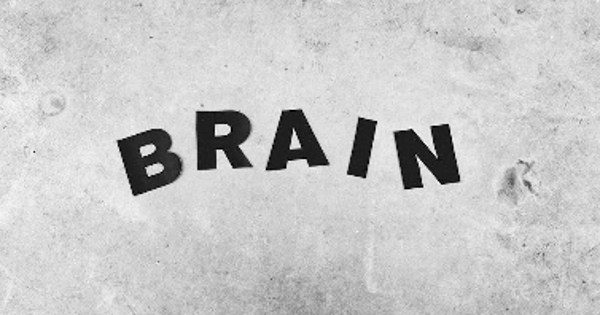5/17/2024
If you've ever wondered how search engines decide which websites rank higher in their search results, you're not alone. Search Engine Optimization (SEO) is a complex process that involves several factors, one of which is the Click-Through Rate (CTR).
In this article, we'll dive deep into the CTR and explore its impact on SEO. We'll break down the jargon, provide real-life examples, and offer actionable tips for improving your website's CTR and, ultimately, the Impact of Click-Through Rate on SEO.
What is Click-Through Rate (CTR)?

Question Marks on Paper Crafts - Pexels - Leeloo The First
Before we delve into the impact of CTR on SEO, let's first understand what CTR is all about. Click-Through Rate is a metric that measures the percentage of people who click on a particular link, advertisement, or search result after seeing it.
In the context of SEO, it refers to the percentage of users who click on your website's link when it appears in the search results for a specific keyword or query.
The Connection between CTR and SEO Rankings

Person Pointing Paper Line Graph - Pexels - Lukas
You might be wondering, "Why does CTR even matter for SEO?" It's a valid question, and the answer lies in the way search engines like Google work.
Search engines are constantly striving to deliver the most relevant and valuable results to users. They use complex algorithms that take into account numerous factors, and CTR is one of them.
Here's how it works:
- User Behavior Signals: Search engines analyze user behavior signals, including CTR, to determine the quality and relevance of a search result. When users consistently click on a particular link in the search results, it indicates that the result is likely relevant and valuable.
- Relevancy and User Satisfaction: Higher CTRs imply that users find the content on a page relevant and valuable, which positively influences search engines' perception of the page's quality. This, in turn, can contribute to improved rankings.
- The Impact on Rankings: While CTR is not the only ranking factor, it can indirectly influence your website's position in search results. Higher CTRs can signal to search engines that your content is valuable, leading to potential ranking boosts.
Why a High CTR Doesn't Always Guarantee High Rankings
Although CTR plays a role in SEO, it's essential to understand that it's just one piece of the puzzle. Search engines consider multiple other factors when determining rankings.
Here are a few reasons why a high CTR might not necessarily guarantee top rankings:
- Competition: Your CTR might be high for a particular keyword, but if your competitors have even higher CTRs or stronger overall SEO, they may still outrank you.
- User Satisfaction: While CTR indicates initial interest, search engines also measure how users interact with your page after clicking. High bounce rates or short time on page could signal a lack of relevance or value, potentially impacting rankings.
- Personalization: Search results can be personalized based on the user's search history, location, and other factors. So, your website might have a high CTR for some users but not for others.
Improving CTR for Better SEO Performance
Now that we understand the significance of CTR in SEO, let's explore practical tips to improve your website's CTR and boost its chances of ranking higher in search results:
Craft Compelling Meta Titles and Descriptions
- Your meta title and description are the first things users see in search results. Make them captivating, relevant, and reflective of your content.
- Include the target keyword naturally to show its relevance to the search query. You can use simple SEO tools for writers to help you with keyword research.
Example:
Weak: "Best Laptops - Our Website"
Strong: "Unleash Productivity with the Best Laptops - Top Tech Reviews"
Use Rich Snippets and Structured Data
- Implement structured data markup to enhance your search result's appearance with rich snippets, like star ratings, images, and additional information.
- Rich snippets attract attention and can increase CTR.
Example:
Plain Result: A simple text snippet about a recipe.
Rich Snippet: An image of the recipe, star ratings, and preparation time.
Create Compelling Content
- Focus on producing high-quality, relevant, and valuable content that addresses users' needs.
- Engaging content encourages users to click and stay on your page.
A/B Test Meta Tags
- Experiment with different meta titles and descriptions to see which ones generate higher CTRs.
- Monitor and analyze the results to optimize your tags for better performance.
Mobile Optimization
- With more users accessing the internet on mobile devices, ensure your website is mobile-friendly and loads quickly.
- Google prioritizes mobile-friendly sites in mobile search results.
Leverage Power Words
- Use compelling and action-oriented language in your meta tags and content.
- Power words like "ultimate," "essential," and "proven" can attract clicks.
- Use simple SEO tools for writers to double check your work.
The Psychology Behind Click-Through Rate (CTR)

Background of Brain inscription on rugged wall - Pexels - SHVETS production
Understanding the psychology behind Click-Through Rate can shed light on why users click on certain search results and how it impacts SEO. As humans, our decisions are often driven by emotions, curiosity, and the desire for instant gratification.
Let's explore the psychological factors at play when users decide which search result to click on:
Relevance and Expectations
When users type a query into the search bar, they have specific expectations about the results they'll receive. The search result's meta title and description play a crucial role in conveying relevance. If your meta tags align with the user's intent and promise to address their needs, they are more likely to click through to your website.
Example:
A user searching for "Best Budget Smartphones" expects to find a list of affordable smartphones with good features. A search result with a meta title like "Top 10 Smartphones for Budget Buyers" is likely to attract clicks due to its clear relevance.
Trust and Credibility
Users often click on results from sources they trust or recognize. Established brands or websites with a reputation for delivering valuable content tend to receive higher CTRs. Building trust with your audience through consistent, reliable content can positively impact your CTR.
Example:
A user searching for "Healthy Smoothie Recipes" is more likely to click on a result from a reputable health and wellness website they've visited before, rather than an unknown blog.
Emotional Appeal
Emotions play a significant role in decision-making, including the choice of which search result to click on. Emotional triggers like curiosity, excitement, or the fear of missing out (FOMO) can influence users to click through to your content.
Example:
A user searching for "Secrets to a Happy Relationship" might be drawn to a search result promising "5 Little-Known Relationship Hacks for a Happier You," as it piques their curiosity.
Analyzing CTR's Impact on SEO Rankings

A man analyzing a chart - Pexels - Tima Miroshnichenko
While CTR is a valuable metric for SEO, it's essential to analyze its impact on rankings from a broader perspective. Search engines like Google use sophisticated algorithms that consider numerous signals to rank websites.
Let's explore how CTR fits into the larger SEO puzzle:
Correlation vs. Causation
While studies have shown a correlation between higher CTRs and improved rankings, it's essential to recognize that correlation does not necessarily imply causation. Higher CTRs are often a byproduct of well-optimized and relevant content, which are also factors that contribute to better rankings.
Long-Term vs. Short-Term Impact
While an increase in CTR may result in a temporary ranking boost, search engines focus on long-term user satisfaction. If users click on a search result but quickly return to the search results page (indicating dissatisfaction), it can have a negative impact on rankings.
Diverse Ranking Factors
Search engines take a holistic approach to ranking websites. They consider factors like content quality, backlinks, user experience, website speed, and mobile-friendliness, among others. A high CTR alone may not be sufficient to overcome deficiencies in other areas.
Balancing CTR Optimization and User-Centric Content

A Grayscale of a Lady Justice Figurine - Pexels - KATRIN BOLOVTSOVA
Striking the right balance between optimizing for CTR and providing user-centric content is crucial for sustained SEO success. Focusing solely on CTR optimization without delivering valuable content may lead to short-term gains but fail to retain and engage users.
Here's how you can achieve the ideal balance:
Keyword Research and User Intent
Conduct in-depth keyword research to understand the intent behind users' search queries. Create content that directly addresses their needs, ensuring your meta tags accurately reflect the content's value.
Engaging and Shareable Content
Invest in creating high-quality, engaging, and shareable content. Valuable content not only attracts clicks but also encourages users to share it, increasing its visibility.
A/B Testing and Iterative Optimization
Experiment with different meta titles and descriptions through A/B testing to identify what resonates best with your audience. Continuously analyze performance data to optimize your CTR and content over time.
Mobile-Friendly Experience
With the growing number of mobile users, prioritize a seamless mobile experience to cater to this significant audience segment. Responsive design and fast-loading pages contribute to better user satisfaction and CTR.
Conclusion
In conclusion, the Impact of Click-Through Rate on SEO is huge. A higher CTR indicates relevance and user satisfaction, potentially leading to improved rankings. However, it's important to remember that CTR is just one of the many factors search engines consider when ranking websites.
Striking the right balance between optimizing for CTR and providing valuable, high-quality content is the key to SEO success. Focus on understanding your audience's needs and crafting compelling meta titles and descriptions that accurately represent your content.
Invest in creating engaging and valuable content that keeps users on your page. Regularly monitor and analyze your performance, making data-driven decisions to optimize your website for both CTR and user satisfaction.
By taking a holistic approach to SEO, you'll not only improve your Click-Through Rate but also enhance your website's overall visibility and authority, leading to long-term success.
Frequently Asked Questions
Click-Through Rate (CTR) is a metric that measures the percentage of users who click on a specific link, advertisement, or search result after viewing it. In the context of SEO, it refers to the percentage of users clicking on a website's link in search results for a particular keyword or query. CTR is relevant to SEO because search engines use it as a user behavior signal to assess the quality and relevance of search results.
Search engines analyze user behavior signals, including CTR, to gauge the quality and relevance of search results. Higher CTRs indicate that users find a particular link valuable and relevant, influencing search engines' perception of the page's quality. While CTR is not the sole ranking factor, it can contribute to improved rankings by signaling that the content is valuable to users.
A high CTR doesn't guarantee top rankings due to factors such as competition, user satisfaction after clicking, and personalization of search results. Competitors with higher CTRs or stronger overall SEO might still outrank a website. User behavior after clicking, such as high bounce rates, could indicate a lack of relevance, and search results may be personalized based on individual user preferences.
Writers can improve a website's CTR by crafting compelling meta titles and descriptions, using rich snippets and structured data, creating high-quality and relevant content, A/B testing meta tags, ensuring mobile optimization, and leveraging power words in meta tags and content. These strategies enhance the appeal of search results, attracting more clicks.
Understanding the psychology behind CTR helps writers create search results that align with user expectations. Relevance, trust, credibility, and emotional appeal play crucial roles in users' decisions to click on search results. By addressing these psychological factors, writers can increase the likelihood of attracting clicks and, subsequently, improve CTR and SEO performance.
CTR is just one element of SEO, and its impact should be analyzed in a broader context. While higher CTRs can lead to temporary ranking boosts, sustained SEO success requires consideration of diverse factors such as content quality, backlinks, user experience, website speed, and mobile-friendliness. Balancing CTR optimization with user-centric content is crucial for long-term success.
Keyword research and understanding user intent are foundational for achieving the right balance in SEO. Writers should create content that directly addresses users' needs, ensuring meta tags accurately reflect the content's value. Aligning content with user intent enhances relevance, positively impacting both CTR and overall SEO performance.
Writers can strike the ideal balance by conducting in-depth keyword research, creating engaging and shareable content, A/B testing meta tags, prioritizing a mobile-friendly experience, and focusing on the overall user experience. Regular monitoring and analysis of performance data help optimize both CTR and user satisfaction, contributing to sustained SEO success.
Focusing on both CTR and user satisfaction is crucial because search engines prioritize long-term user satisfaction. While CTR indicates initial interest, user behavior after clicking, bounce rates, and overall satisfaction impact rankings. Striking the right balance ensures that increased CTR is complemented by valuable and engaging content, leading to sustained SEO success.
The impact of Click-Through Rate on SEO is significant, indicating relevance and user satisfaction. Writers should strike a balance between optimizing for CTR and providing high-quality, valuable content. By understanding user psychology, crafting compelling meta tags, and continuously optimizing based on performance data, writers can enhance CTR and overall website visibility, leading to long-term SEO success.

